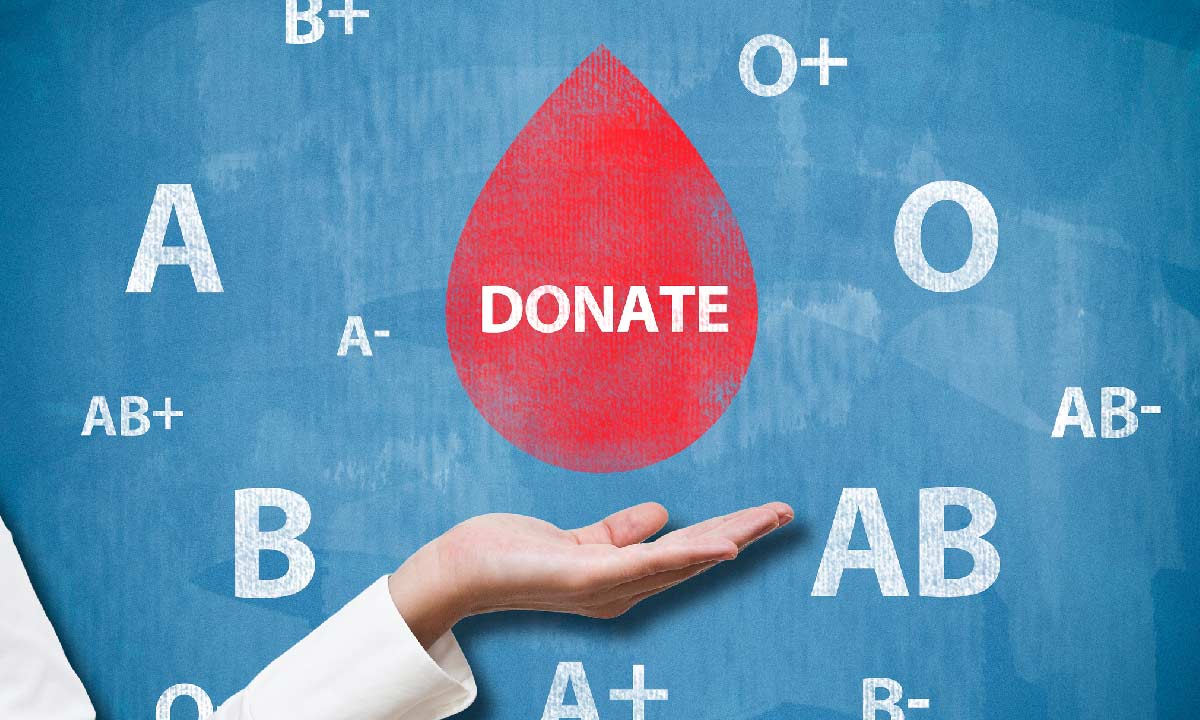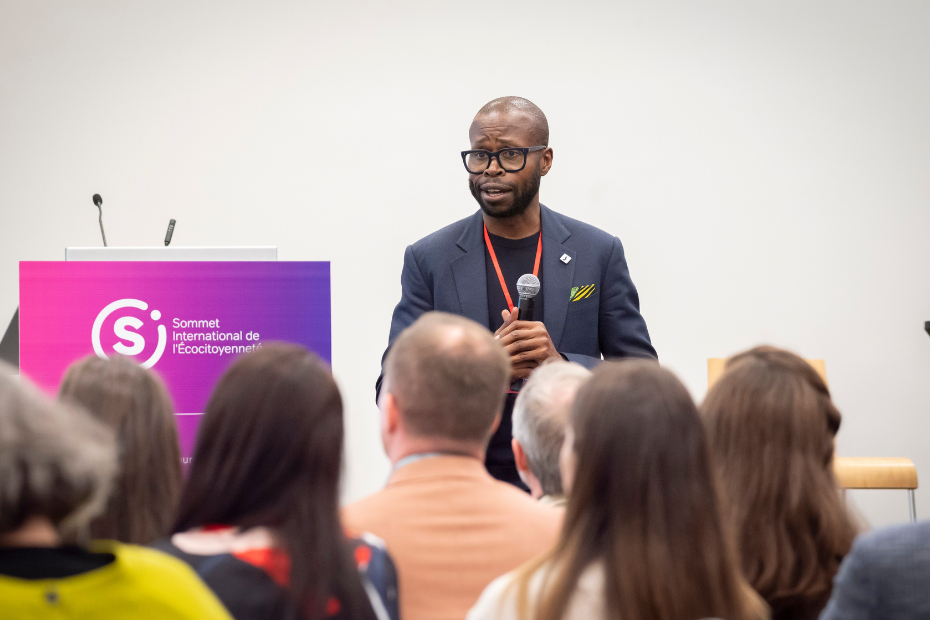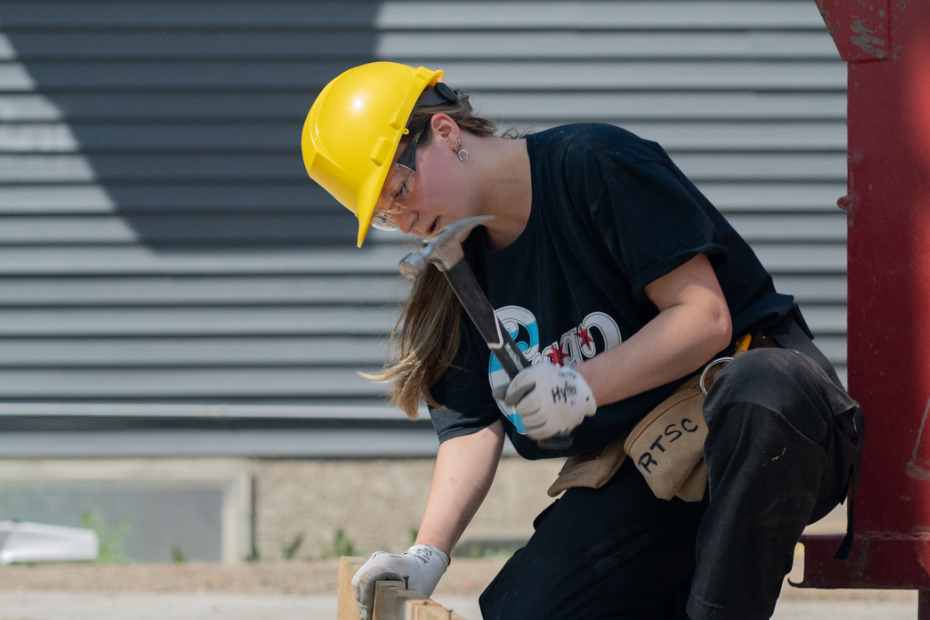Demand for blood is currently higher than it was before the onset of COVID-19, yet supply is down from pre-COVID levels. Officials say it is due to a reduction of blood donation locations, physical distancing requirements and fewer donations early in the pandemic. Yet Canadians undergoing surgery, cancer patients and trauma victims still rely on blood.
That’s why group efforts are so valuable — and why a ‘strength in numbers’ approach can really pay off. Through the RBC Gives Blood for Life program, dedicated champions have organized and hosted donor centres at RBC Waterpark Place six times a year, which have collected nearly 14,000 units of blood since they started. This year alone, RBC has organized more than two dozen group blood donations across the country.
“We’re a dedicated group that shares the same passion, but each of us has our own reasons to want to help patients,” says Amanda Moore, chair of the RBC Gives Blood for Life program. “Our committee has blood and stem cell recipients, and many of us have loved ones who’ve been saved by donations, or are currently relying on them.”
Getting Creative During Challenging Times
Another important part of supporting Canada’s Lifeline is to identify potential stem cell donors.
Becoming an unrelated stem cell donor in Canada begins with joining Canadian Blood Services Stem Cell Registry. Normally potential donors are recruited at stem cell swabbing events, where participants swab the insides of their own cheeks to collect samples of cells. The DNA from those cells reveals whether a prospective donor is a match for a patient in need.
With swabbing events suspended during the pandemic, Canadian Blood Services has encouraged people to register online and have a swab kit delivered by mail, as patients still need to find matching donors.
RBC has used both its scale — and a healthy dose of creativity — to help out.
Tom Wong , Product Analyst -Usability with RBC Investor & Treasury Services, who had a stem cell transplant in 2015 to cure a rare blood cancer, proposed a virtual swabbing event to bring people together to help.
“I was considering the idea of having a party via Zoom. But instead of getting together online with no real purpose other than ‘Hello, what’s new?’, I thought we could also bring people together for an urgent purpose like registering to donate stem cells,” says Wong, one of the lead organizers of the group. “I thought it’d be fun, playful and meaningful to see a virtual room full of people, all with Q-tips in their mouths.”
Knowing the additional challenges patients were facing during COVID-19 made Wong more determined than ever to support Canada’s Lifeline. The virtual ‘swabbing party’ took place on August 20th, with tens of employees taking part, with many more ordering their own swab kits from Canadian Blood Services directly.
A Match for the Canadian Population
The RBC community is remarkably well equipped to help the blood and stem cell needs of Canadian patients thanks to three main company characteristics.
- Size: With more than 86,000 employees in Canada and around the world, the company has a huge pool of potential donors encouraged to give.
- Diversity: RBC is made up of individuals from a wide range of ethnic backgrounds, mirroring the diversity of Canada as a nation. As a result, they are in a position to match the needs of the greater community.
- Youth: RBC has thousands of employees under the age of 35, as well as a cohort of over 1,400 summer students hired this year through the “RBC Students” program. Reaching the younger generation can encourage a lifelong habit of blood donation. Amanda Moore, chair of the RBC Gives Blood for Life program is evidence of the power of starting young. “My parents got me started when I was 17 and I just completed my 95th blood donation,” she says.
What’s more, doctors consider healthy males between the ages of 17 and 35 are optimal stem cell donors because their donations often result in positive outcomes for patients.
The RBC community is known for acts of compassion, kindness and generosity. They are a company filled with passionate people who take action, inspire others and roll up their sleeves —literally as well as figuratively. When it comes to supporting Canada’s Lifeline, they have again proven how helping out is in their DNA.
This article is intended as general information only and is not to be relied upon as constituting legal, financial or other professional advice. A professional advisor should be consulted regarding your specific situation. Information presented is believed to be factual and up-to-date but we do not guarantee its accuracy and it should not be regarded as a complete analysis of the subjects discussed. All expressions of opinion reflect the judgment of the authors as of the date of publication and are subject to change. No endorsement of any third parties or their advice, opinions, information, products or services is expressly given or implied by Royal Bank of Canada or any of its affiliates.



















